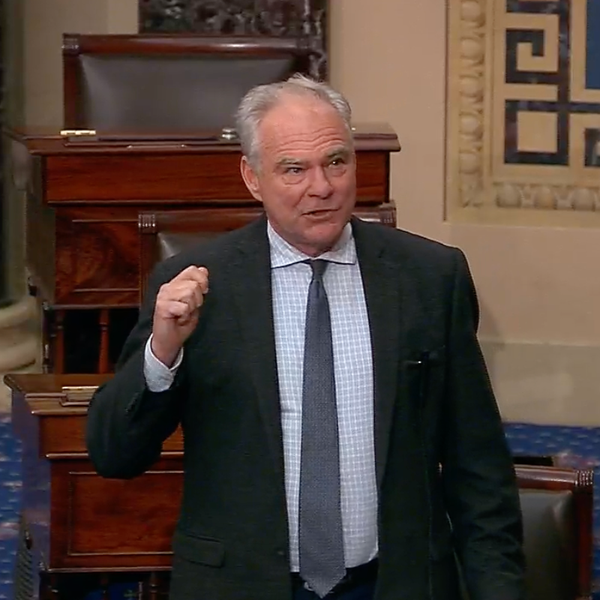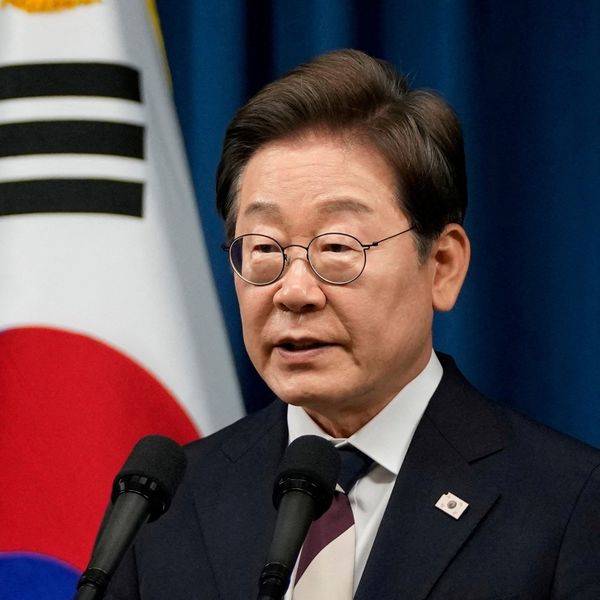As the current chair of BRICS, Russia is pursuing a rather extensive agenda related to finance that includes enhancing the role of member countries in the international monetary and financial system and developing interbank cooperation and settlements in national currencies.
BRICS is an intergovernmental organization founded by Brazil, Russia, India, China, South Africa that recently expanded and now includes Iran, Egypt, Ethiopia, and the United Arab Emirates.
There has also been discussion of a potential BRICS currency as part of a strategy of de-dollarization — the substitution of the dollar as the primary currency for international financial transactions. The U.S. trade war with China, as well as U.S. sanctions on China and Russia, are central to this ongoing discussion.
Although much U.S. media attention was paid to the enhancement of military and political cooperation during the summit between Russian President Vladimir Putin and Chinese President Xi Jinping in Beijing earlier this month, financial issues also figured high on the agenda.
The Russian delegation included Putin’s new defense minister, Andrei Belousov, whose appointment is believed to help ensure that the Russian economy better serves the strategic needs of the military. Russia's Finance Minister Anton Siluanov and the governor of the Central Bank, Elvira Nabiullina, also participated. Nabiullina’s participation was particularly noteworthy as she does not regularly accompany Putin on overseas visits. However, her participation would have been crucial for any discussion regarding sanctions workarounds and Moscow’s interest in de-dollarization.
Also noteworthy was Putin’s mention that trade turnover between the two countries in 2023 increased by some 25 percent, reaching over $227 billion. He was also keen to underscore that 90 percent of bilateral trade between the two countries was conducted in rubles and/or yuan.
It must be mentioned that Chinese banks are under increasing pressure from the U.S. to stop funding these arrangements. In any case, Putin’s observations were clearly intended not only for the Chinese leadership but also for the “global majority” or Global South as well to promote global joint Sino-Russian initiatives, such as de-dollarization, which have received increased support recently.
Indeed, it was probably no coincidence that during Putin’s visit it was announced that Beijing dumped a total of $53.3 billion of U.S. Treasuries and agency bonds combined in the first quarter, according to calculations based on the latest data from the U.S. Department of the Treasury. Belgium, often seen as a custodian of China’s holdings, also disposed of $22 billion of Treasuries during the same period. These figures underscore China’s continuing commitment to de-dollarization.
As of March 2024, over half (52.9%) of Chinese payments were settled in RMB while 42.8% were settled in U.S. dollars. Furthermore, according to data released by the People's Bank of China, China's gold reserves rose to 2264.87 tons in the first quarter of 2024, up from 2235.39 tons in the fourth quarter of 2023.This is double the share from the previous five years.
According to Goldman Sachs, foreigners’ increased willingness to trade assets denominated in RMB continues to contribute to de-dollarization in favor of China’s currency. Early last year, Brazil and Argentina announced that they would begin allowing trade settlements in RMB. With the onset of the global de-dollarization trend, numerous countries have sped up diversifying their reserves by augmenting their gold holdings and adopting local currencies for international transactions.
At the ASEAN finance ministers and central banks meeting in Indonesia in March, policymakers discussed cutting their reliance on the U.S. dollar, the Japanese yen, and the euro and moving to settlements in local currencies instead. And, in early April, Indian media widely reported that the Ministry of External Affairs (MEA) had announced that India and Malaysia were starting to settle their trade in the Indian rupee. India already conducts most of its energy trade with Russia in rupees or rubles.
As de-dollarization accelerates, the BRICS nations continue efforts to establish a new reserve currency backed by a basket of their respective currencies. BRICS members have not developed their own currency; however, a BRICS blockchain-based payment system is in the works, according to Kremlin aide Yury Ushakov in March 2024. The payment system, referred to as the BRICS Bridge, would connect member countries' financial systems using payment gateways for settlements in central bank digital currencies.
Ideally, a BRICS currency would allow these countries to assert their economic independence while competing with the existing international financial system. The current system is dominated by the U.S. dollar, which accounts for about 90 percent of all currency trading. Until recently, nearly 100 percent of oil trading was conducted in dollars; however, in 2023, one-fifth of oil trades were reportedly conducted with non-dollar currencies.
The potential impact of a new BRICS currency on the U.S. dollar remains uncertain, with experts debating its potential to challenge the dollar's dominance. According to an article on Nasdaq.com, “Any such currency, if stabilized against the dollar, would weaken the power of U.S. sanctions, by reducing the influence of the dollar globally…weakening the status of the dollar as a global currency and mitigating risks associated with global volatility due to the lessening of dependence on the dollar…As more countries would seek alternatives to the dollar this would only accelerate the trend toward de-dollarization.”
In a recent interview, Sergey Ryabkov, Russia’s deputy foreign minister, revealed that the de-dollarization agenda would take center stage at the BRICS summit scheduled to take place in Russia in October 2024. The alliance will become stronger after the summit, ushering developing nations into a "whole new ball game."
The BRICS has also created the BRICS Bank in 2015. Now known as the New Development Bank, or NDB, it mobilizes resources for infrastructure and sustainable development projects in the BRICS and other emerging market economies and developing countries.
In 2021, the NDB expanded its membership and admitted Bangladesh, Egypt, the United Arab Emirates and Uruguay as new members. In March its board of directors concluded its 43rd meeting at its headquarters in Shanghai. During meetings a robust project pipeline for 2024 was discussed, aligned with the development objectives of NDB’s member countries.
Although the threat of de-dollarization and a digital BRICS currency do not appear imminent, there is no doubting the commitment, particularly by China and Russia, to the creation of an alternative to the existing financial architecture underpinned, as it is, by the U.S. dollar.
If successful, the addition of a competing system could prove particularly enticing to countries in the Global South and would hopefully lead U.S. policy makers to exercise greater restraint regarding the use of sanctions as a foreign policy hammer, especially given the current domestic environment of inflationary pressure and ever-growing national debt.
- Russia, China dump the dollar as Moscow announces new trade corridors ›
- De-dollarization: Not a matter of if, but when ›
- Dedollarization is here, like it or not ›
- Turkey's BRICS gambit is just what Russia ordered | Responsible Statecraft ›
- BRICS signals move away from US dominated financial system | Responsible Statecraft ›
- China-India cool things down. What does it really mean? | Responsible Statecraft ›
- Biden's vaunted Indo-Pacific 'allies & partners' have their own ideas | Responsible Statecraft ›
- Brazil pulled off successful G20 summit | Responsible Statecraft ›
- Peace denied? Russian budget reinforces wartime economy | Responsible Statecraft ›
- Trump loves tariffs but expect a more complicated trade policy | Responsible Statecraft ›















